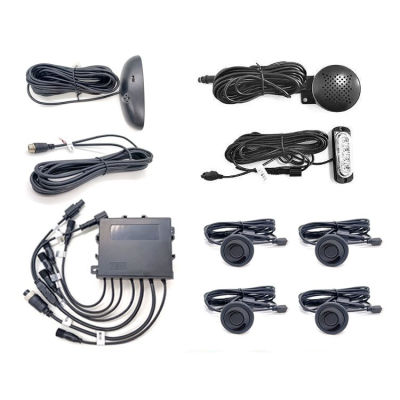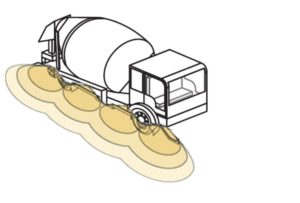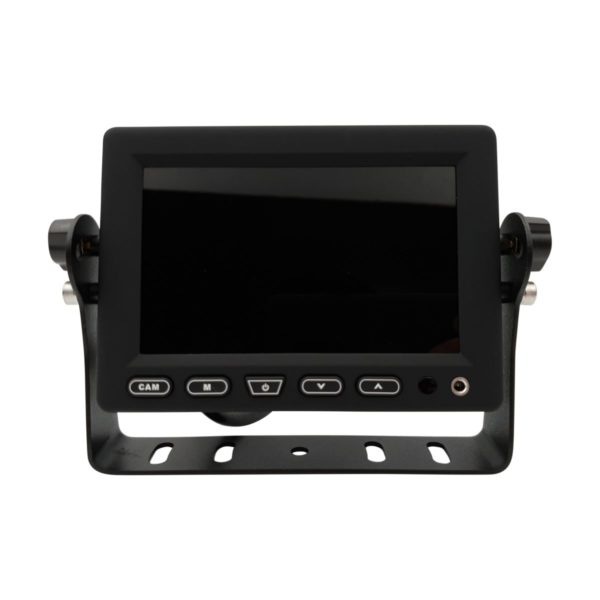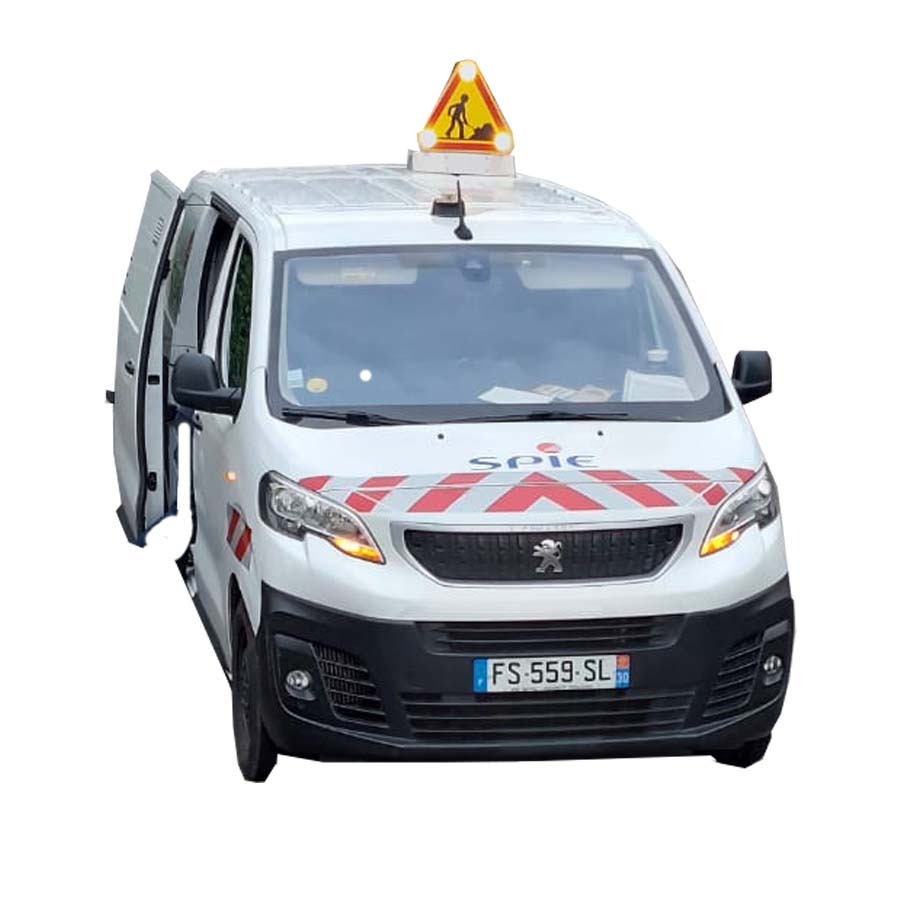Sorry, this entry is only available in French. For the sake of viewer convenience, the content is shown below in the alternative language. You may click the link to switch the active language.
Caméra de recul camion : tout ce que vous devez savoir
Une caméra de recul poids lourd est un système d’aide au stationnement présenté sous la forme d’un équipement vidéo qui filme l’environnement extérieur du véhicule.
La plupart des véhicules récents sont déjà équipés d’une caméra de recul. Mais la plupart des camions sont souvent fournis sans caméra.
Comment bien choisir sa caméra de recul pour camion ?
Les critères d’une bonne caméra de recul :
Indice IP :
L’indice IP classifie le degré de protection assuré par un composant électrique contre l’intrusion d’éléments solides, de poussière, d’eau et contre les contacts intempestifs.
La plupart des caméras d’ACI ont un indice IP69K
La signification de l’indice IP69K :
- IP6_ signifie une protection maximum contre les poussières.
- IP_9 signifie une protection maximum contre le nettoyage à haute pression, à haute température et venant de plusieurs directions.
Pour résumer, l’achat d’une caméra à indice IP élevé signifie que vous aurez un produit résistant à l’eau et à la poussière qui fonctionnera peu importe les conditions extérieures.
La résolution :
Si vous souhaitez équiper votre camion d’une caméra de recul, vous devez vous renseigner au préalable sur la résolution proposée par cette dernière. La résolution de l’écran d’affichage n’est pas à négliger également.
Les appareils les plus courants sur le marché ont une résolution de 1280 x 720 pixels (HD), les appareils de qualité supérieure offrent une résolution allant jusqu’à 1920 x 1080 pixels (FULL HD). Plus la résolution est élevée, plus l’image est bien plus nette et les détails seront bien plus visibles. Un grand écran de 7 pouces ou plus ressortira la différence.
La température de fonctionnements :
La température de fonctionnements des caméras de recul est absolument à prendre en compte pour les véhicules qui l’utilise sous certaines conditions météorologiques, car la caméra ne risque de plus fonctionner sous certains degrés, les caméras ACI peuvent fonctionner jusqu’à -20° et jusqu’à 65° donc pour ce critère vous n’avez aucun souci à vous faire.
La résistance aux vibrations :
Les caméras de recul peuvent résister à de nombreux chocs et agitations. L’unité de mesure des vibrations est “g” qui est l’accélération due à la gravité. Les valeurs pour les systèmes qu’on retrouve en majorité sur le marché se situent entre 4 à 5 g. Les systèmes prévus pour des utilisations extrêmes peuvent aller jusqu’à 10 g et ACI fait bien partie des meilleurs avec ces 10 G sur la plupart de ses caméras de recul.
Les différents type de caméra de recul
Les caméras filaires :
Le principal avantage d’une caméra filaire est qu’elle offre généralement une meilleure qualité d’image. Même si la technologie sans fil s’est améliorée, elle ne peut toujours pas battre un bon vieux fil de cuivre torsadé.
Une autre bonne raison de choisir une caméra filaire est que la connexion est plus stable, alors que les caméras sans fil peuvent produire des parasites lorsqu’elles sont soumises à des interférences. Il est très dangereux que vous perdiez votre signal sans fil au moment où vous enclenchiez la marche arrière de votre camion.
Enfin, les caméras filaires offrent généralement plus de fonctionnalités. Pour faire simple, la technologie existe depuis bien plus longtemps et les fabricants sont plus à l’aise avec les caméras filaires. C’est pourquoi la plupart des caméras haut de gamme sont filaires.
Cela dit, l’installation d’une caméra de stationnement filaire peut être difficile. Si vous n’êtes pas à l’aise avec l’idée de faire passer des fils dans votre camion, vous devrez faire appel à un professionnel pour faire le travail. Cela ne devrait pas être absurdement cher, mais une heure ou deux de travail qualifié devrait être prise en compte dans le prix.
De même, les caméras filaires sont souvent plus chères que les caméras sans fil, principalement en raison de la différence de qualité.
Les caméras sans fil :
À l’inverse, le principal avantage d’une caméra de recul sans fil est qu’elle est facile à installer. Comme vous n’avez pas besoin de faire passer de fils, une grande partie du casse-tête est éliminée de l’équation.
N’oubliez pas que le type de montage est tout aussi important de ce point de vue. Une caméra filaire avec un support de plaque d’immatriculation n’est pas beaucoup plus difficile à installer qu’une caméra sans fil avec un support de montage.
Les caméras sans fil sont également plus abordables. Il ne s’agit pas d’une règle universelle, et il y a pas mal de chevauchements. Mais d’une manière générale, une caméra sans fil coûte moins cher.
En revanche, les caméras de recul sans fil sont généralement de qualité inférieure et sont sujettes aux interférences. Selon le modèle, vous devrez peut-être aussi changer la batterie de temps en temps.
Quels sont les véhicules concernés par des caméras de recul ?
Il existe plusieurs véhicules concernés, mais on retrouve le plus les :
Les principaux avantages d’avoir une caméra de recul :
La caméra de recul, en plus d’être facile à installer, vous apporte énormément d’avantages pour la conduite : elle vous offre un meilleur confort lors de vos manœuvres pour stationner ou reculer, avec en plus une meilleure visibilité de ce qui se passe à l’arrière du véhicule.
Elle vous permet aussi d’avoir une meilleure visibilité lorsqu’il pleut contrairement aux rétroviseurs extérieurs qui peuvent vite être submergés d’eau ou de condensation.
Et bien sûr le plus important, la caméra de recul permet de diminuer le risque de collisions avec des objets ou des usagers de la route.
Les accidents peuvent se voir diminuer puisqu’il vous sera plus facile de voir si un piéton passe derrière votre camion, contrairement aux rétroviseurs qui sont inefficaces pour avoir une vision sur vos angles morts, la caméra n’en a presque pas. Attention cependant, la caméra de recul ne doit en rien remplacer vos rétroviseurs extérieurs et intérieurs, vous devez continuer à faire vos vérifications avant chaque manœuvre.
Il existe aussi des caméras de recul doublées d’un radar, généralement plus onéreuses elles sont aussi plus performantes. Pour aider la caméra, le radar émet des bips sonores qui s’intensifient en volume au fur et à mesure que vous vous approchez d’un quelconque obstacle. Ainsi, en plus de l’image, vous appréhendez mieux la distance entre votre camion et les obstacles.








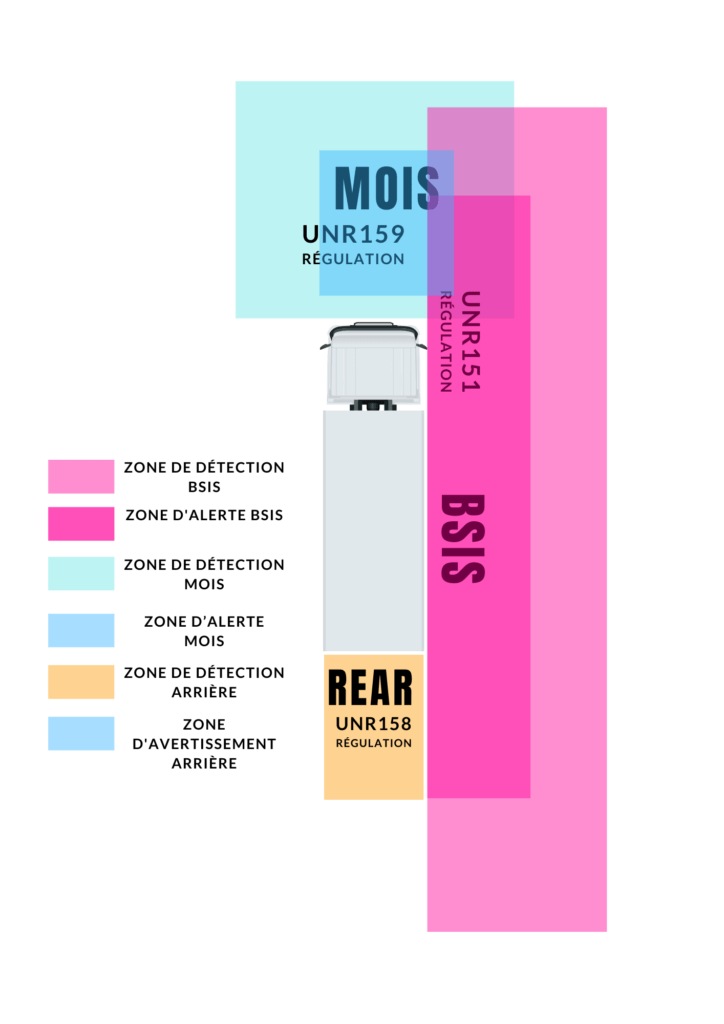

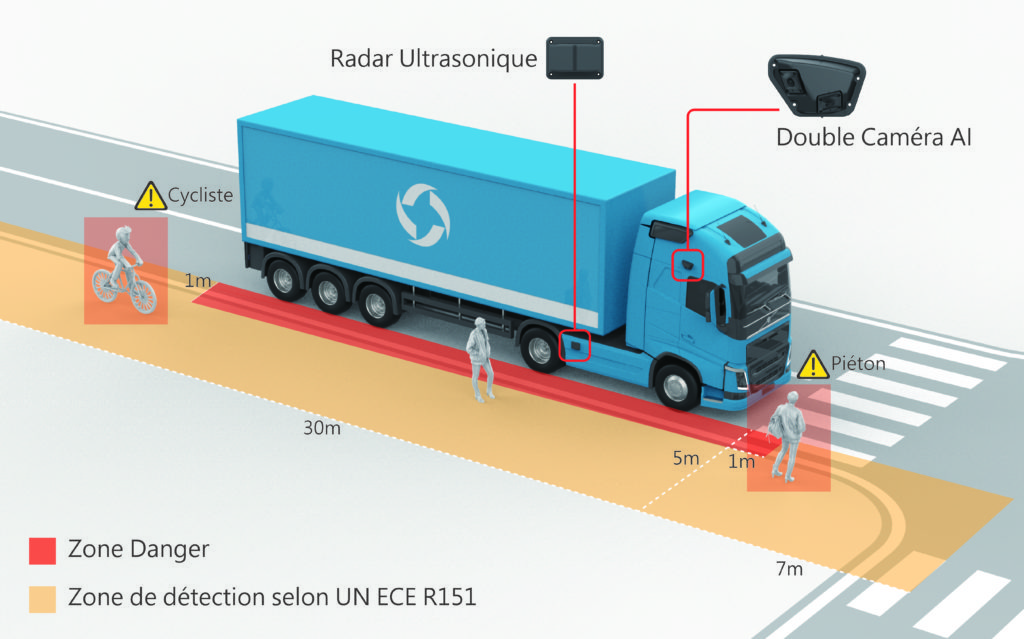
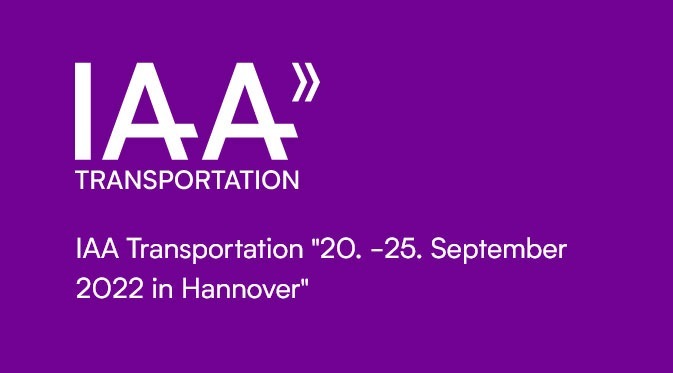
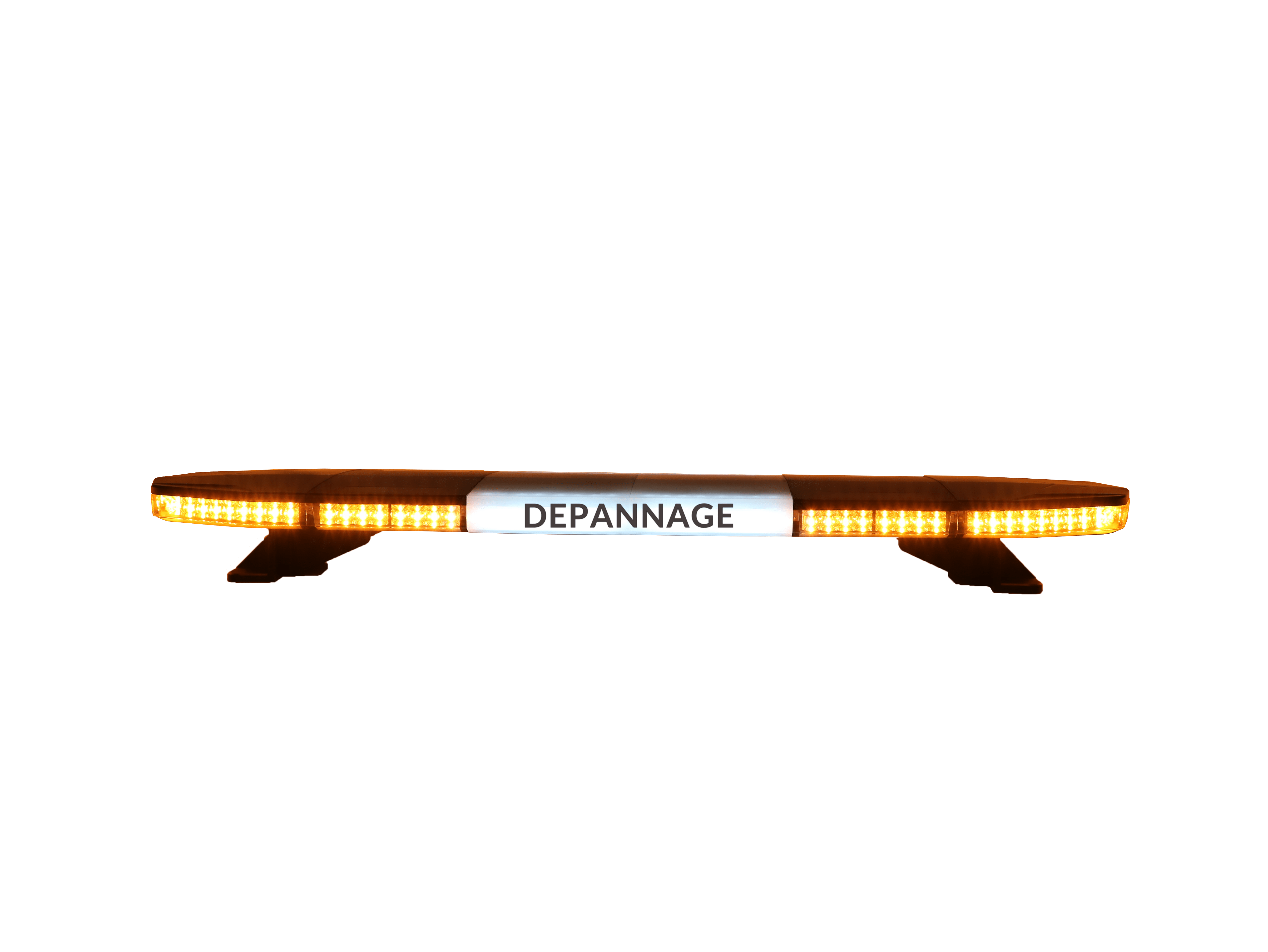

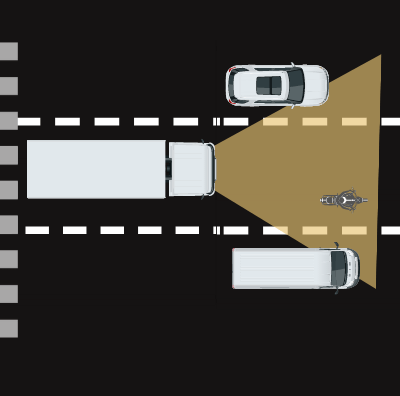
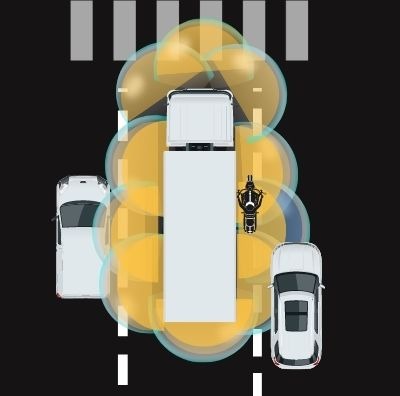
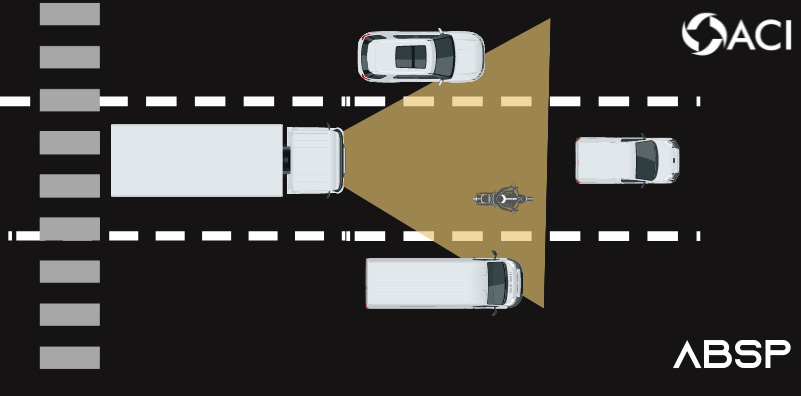 Grand champ de vision
Grand champ de vision 